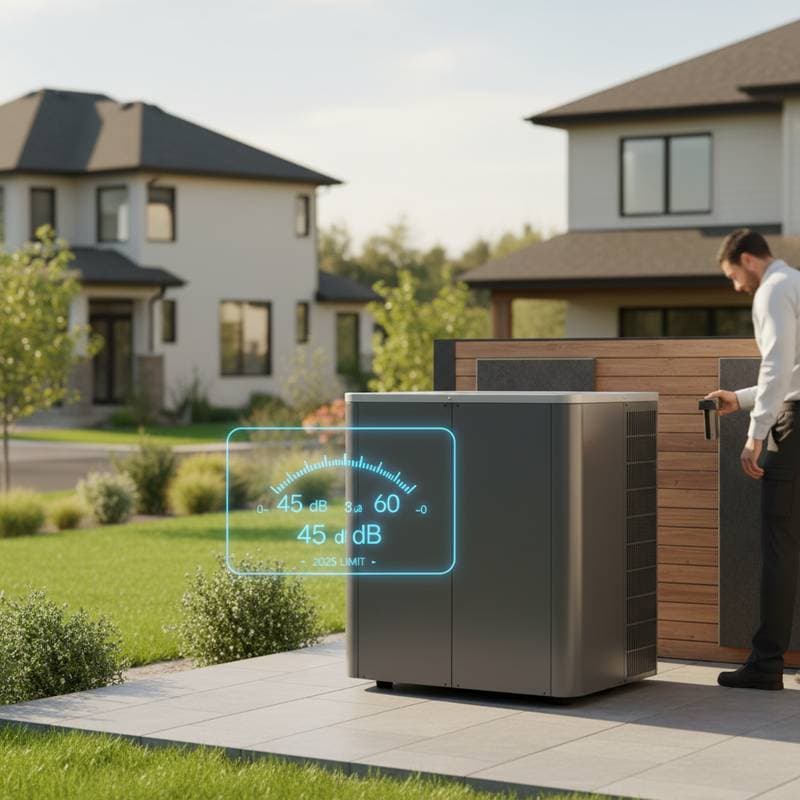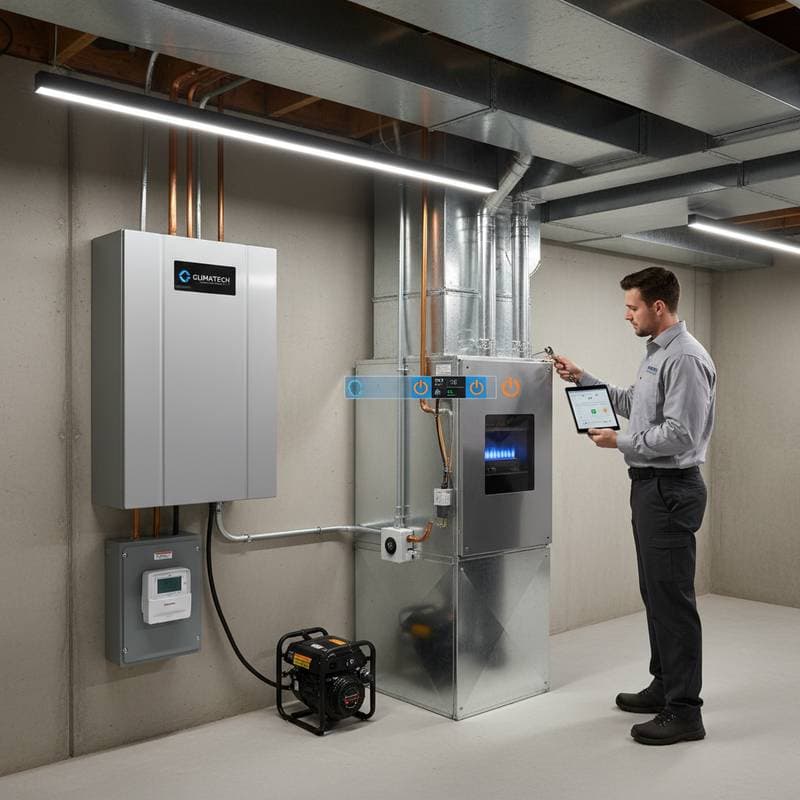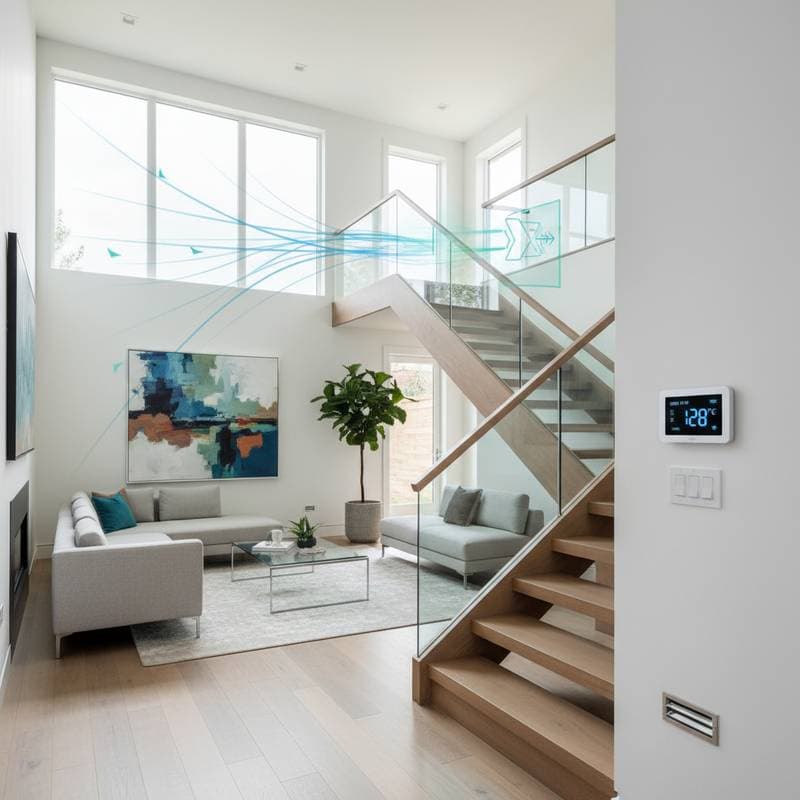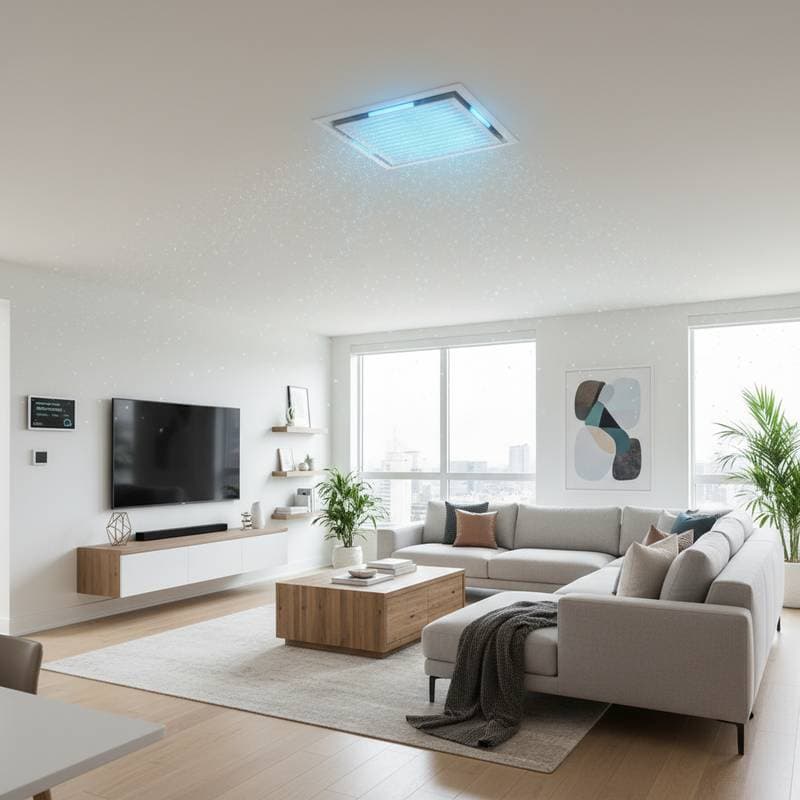Achieve Up to 38% Energy Savings with Smart HVAC Zoning
Smart HVAC zoning enables precise control over heating and cooling in specific areas of your home. This technology divides the space into independent zones, each with its own temperature settings, so the system operates only where needed. Homeowners benefit from reduced energy consumption and enhanced comfort without overworking the entire HVAC unit.
The following table summarizes essential details for quick reference.
| Item | Key Data |
|---|---|
| Average Installation Cost | $2,500 - $4,500 |
| Typical Energy Savings | Up to 38% |
| Ideal for Homes | Two stories or 1,500+ sq. ft. |
| Payback Period | Usually within 2-4 years |
| Primary Benefit | Customized comfort and lower utility bills |
Average Costs for Smart HVAC Zoning Systems
Installation expenses for a smart HVAC zoning system vary based on the number of zones, selected equipment, and existing infrastructure. Homeowners typically invest between $2,500 and $4,500 for a full setup. These costs cover components and professional services to ensure optimal performance.
Detailed Cost Breakdown
- Base Zoning Control System: Ranges from $1,000 to $2,000, including the central control panel and smart thermostats.
- Motorized Dampers: Costs $200 to $500 per zone, influenced by duct dimensions and materials.
- Labor and Installation: Accounts for $1,000 to $2,000, encompassing wiring, calibration, and thorough testing.
- Optional Smart Thermostat Integration: Adds $200 to $400 per unit for Wi-Fi-enabled models compatible with home automation.
Homes equipped with recent HVAC systems often require minimal modifications for zoning integration. In contrast, older setups might demand duct upgrades or additional wiring, elevating the overall expense.
Factors Influencing Smart HVAC Zoning Expenses
Multiple variables determine the total cost of a zoning installation. Homeowners who grasp these elements can allocate funds effectively and prioritize investments for superior outcomes.
Number of Zones
Additional zones increase expenses due to the need for separate dampers, thermostats, and wiring. Homes generally perform best with two to four zones, such as dedicated areas for bedrooms, living spaces, and basements or upper levels.
System Compatibility
Current HVAC units with variable-speed blowers and multi-stage compressors integrate seamlessly with zoning. Single-stage or outdated systems may require component upgrades to manage varying airflow demands across zones.
Energy Efficiency Ratings
Pairing zoning with a high-efficiency system boasting strong SEER2 or AFUE scores maximizes savings potential. A more efficient foundation accelerates the return on the zoning investment.
Home Size and Layout
Multi-story or expansive homes derive the greatest advantages from zoning. Single-level properties with uniform temperatures see lesser gains, while variations in sunlight, insulation, or usage amplify the technology's value.
Advanced Thermostat Capabilities
Contemporary smart thermostats adapt to routines, track humidity, and automate adjustments. Although initial costs are higher, these features enhance long-term comfort and energy efficiency.
Types of Smart HVAC Zoning Systems
Zoning solutions differ in design and application. Selection hinges on your present HVAC configuration and home architecture.
Traditional Ducted Zoning Systems
These setups employ motorized dampers within ducts to direct airflow to designated areas.
Pros:
- Compatible with the majority of central HVAC configurations
- Dependable and time-tested technology
- Capable of managing multiple rooms within a single zone
Cons:
- Necessitates access to ductwork during setup
- Demands professional airflow balancing to avoid imbalances
Ductless Mini-Split Zoning Systems
Individual indoor air handlers link to a shared outdoor unit, creating distinct zones.
Pros:
- Eliminates the need for ductwork
- Offers superior efficiency and precise room-level control
- Ideal for renovations or homes lacking ducts
Cons:
- Involves higher per-unit initial investment
- Features visible indoor components on walls or ceilings
Smart Vent Zoning Systems
Wireless vents installed at registers automatically regulate airflow.
Pros:
- Supports straightforward DIY installation
- Presents a more economical alternative to extensive duct alterations
- Seamlessly connects to smart home ecosystems
Cons:
- Provides limited control in expansive properties
- Achieves less precise airflow distribution than full ducted options
Indicators That Your Home Requires Smart HVAC Zoning
Uneven heating or cooling and escalating utility costs signal the need for zoning. Consider these indicators to assess suitability.
- Persistent hot or cold spots in specific rooms
- Elevated bills from continuous operation in unoccupied spaces
- Temperature disparities across multiple floors
- Varying preferences among occupants for simultaneous comfort levels
- Challenges in balancing new additions like finished basements
The presence of two or more signs suggests zoning as a viable upgrade.
Steps in the Smart HVAC Zoning Installation Process
Professional installation follows a structured sequence to guarantee reliability. Familiarity with these phases aids in scheduling and financial planning.
- Home Assessment: A qualified technician evaluates ducts, insulation, and the existing system for compatibility.
- System Design: Professionals map zones according to layout, usage, and airflow needs.
- Damper Installation: Motorized units position within ducts to modulate zone-specific airflow.
- Thermostat Setup: Install smart devices or sensors in each zone for independent regulation.
- Control Panel Integration: Components link to a central board that interfaces with the HVAC unit.
- Testing and Calibration: The setup undergoes balancing for uniform airflow and precise temperature control.
- User Orientation: Guidance covers app-based adjustments, scheduling, and performance monitoring.
Labor Components in Smart HVAC Zoning
Labor encompasses essential tasks for a seamless integration.
- Modifications to ducts and placement of dampers
- Wiring for thermostats and sensors
- Calibration and comprehensive testing
- Configuration of smart control software
Frequently Asked Questions on Smart HVAC Zoning
How Does HVAC Zoning Conserve Energy?
Zoning targets conditioning to active areas, minimizing runtime and consumption. Airflow focuses on necessary spaces, curbing inefficiency and equipment strain.
Is Retrofitting Possible for Existing HVAC Systems?
Most contemporary central systems accommodate zoning additions. Technicians inspect ducts and capacity, suggesting upgrades as required.
What Is the Optimal Number of Zones for a Home?
Two to four zones suit most residences, often separating living areas, bedrooms, and basements. Layout and usage dictate the precise count.
Do Smart Thermostats Integrate with Zoning?
Yes, they serve as the core of advanced setups, enabling automated monitoring and remote access via smartphones or automation hubs.
Does the Investment in Zoning Justify Itself?
For homes with temperature inconsistencies or high costs, payback occurs in a few years via savings and comfort gains.
Can Zoning Prolong HVAC System Longevity?
Reduced operational demands lessen component wear and cycling frequency, thereby extending service life.
Is Zoning Applicable to Ductless Mini-Split Systems?
Ductless designs inherently zone, with each indoor unit functioning independently for room-specific control.
Implement Zoning for Optimized Home Climate Control
Smart HVAC zoning provides targeted efficiency, curbing expenses while ensuring uniform comfort. Independent zone management eliminates energy loss in unused areas and promotes sustainable practices.
Schedule a consultation with a certified HVAC specialist to evaluate your setup and customize a zoning strategy. Obtaining several estimates ensures competitive pricing and professional execution.





